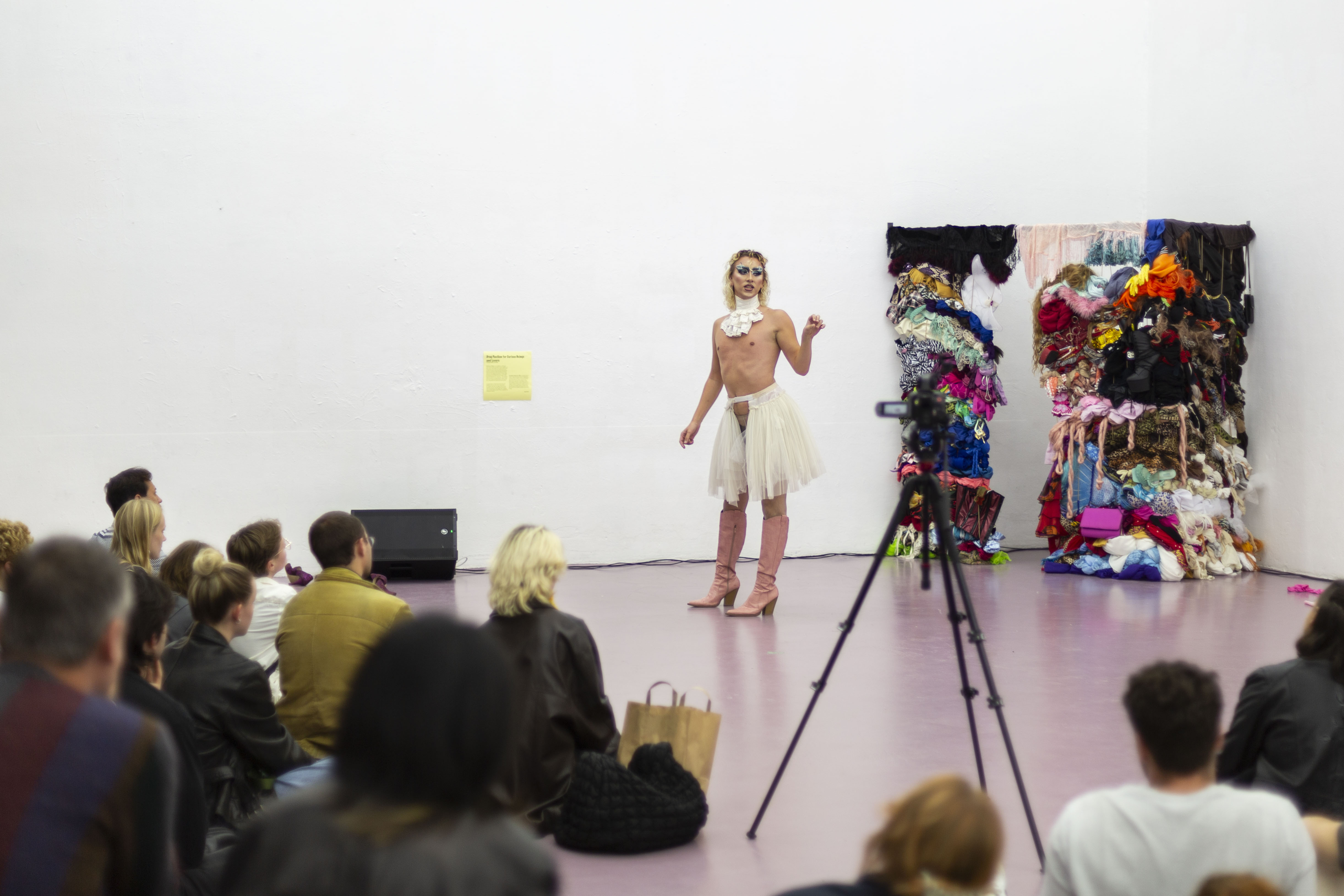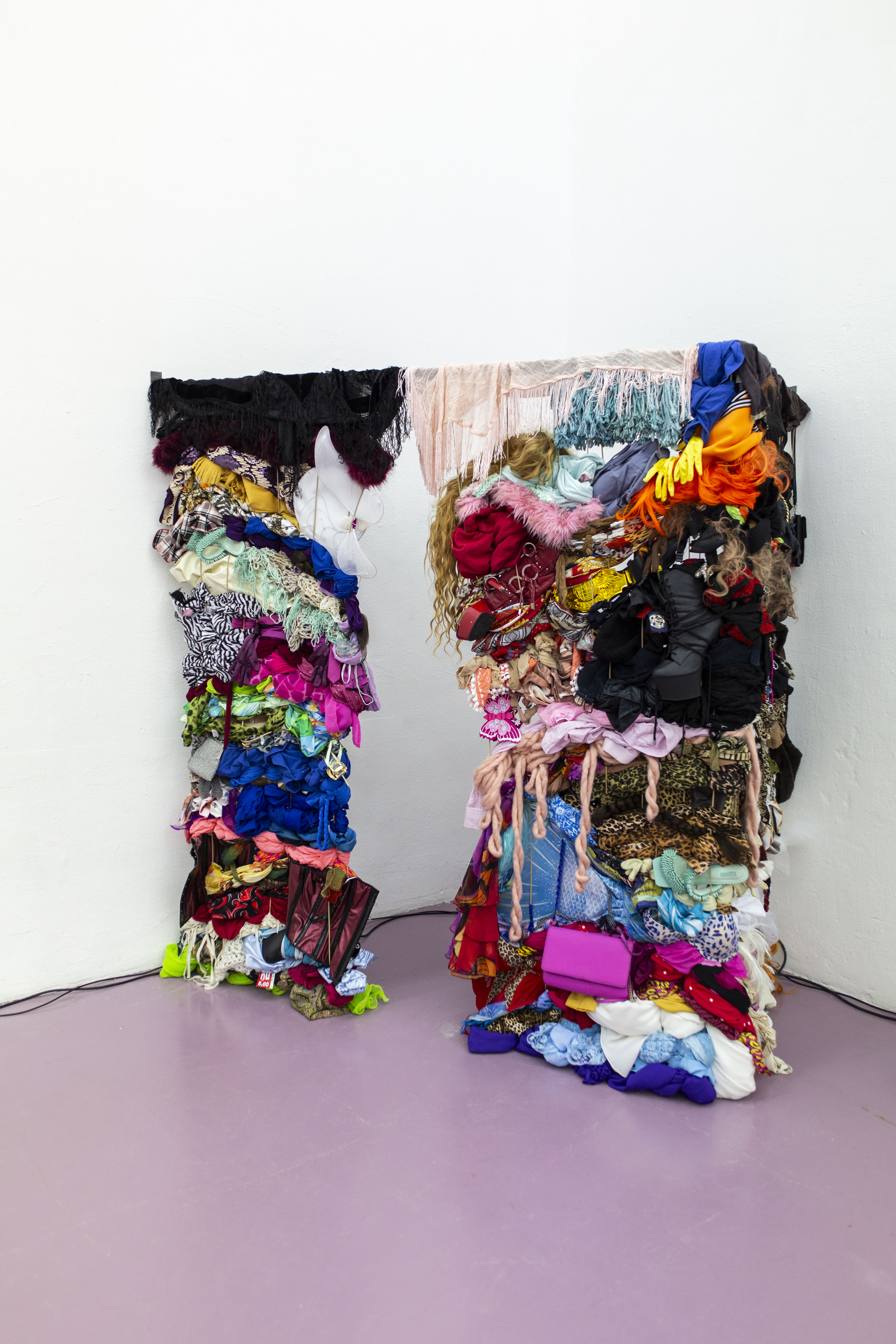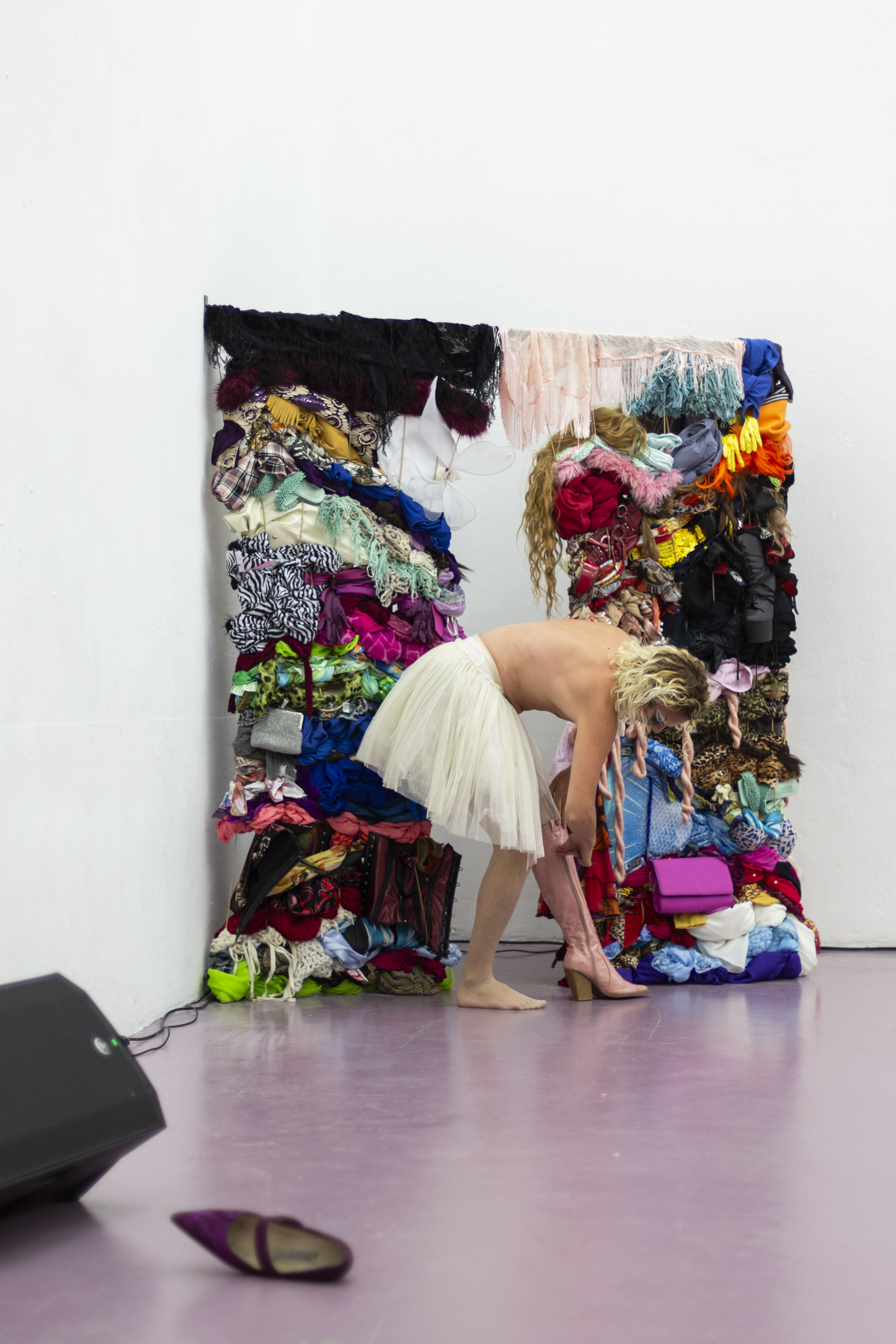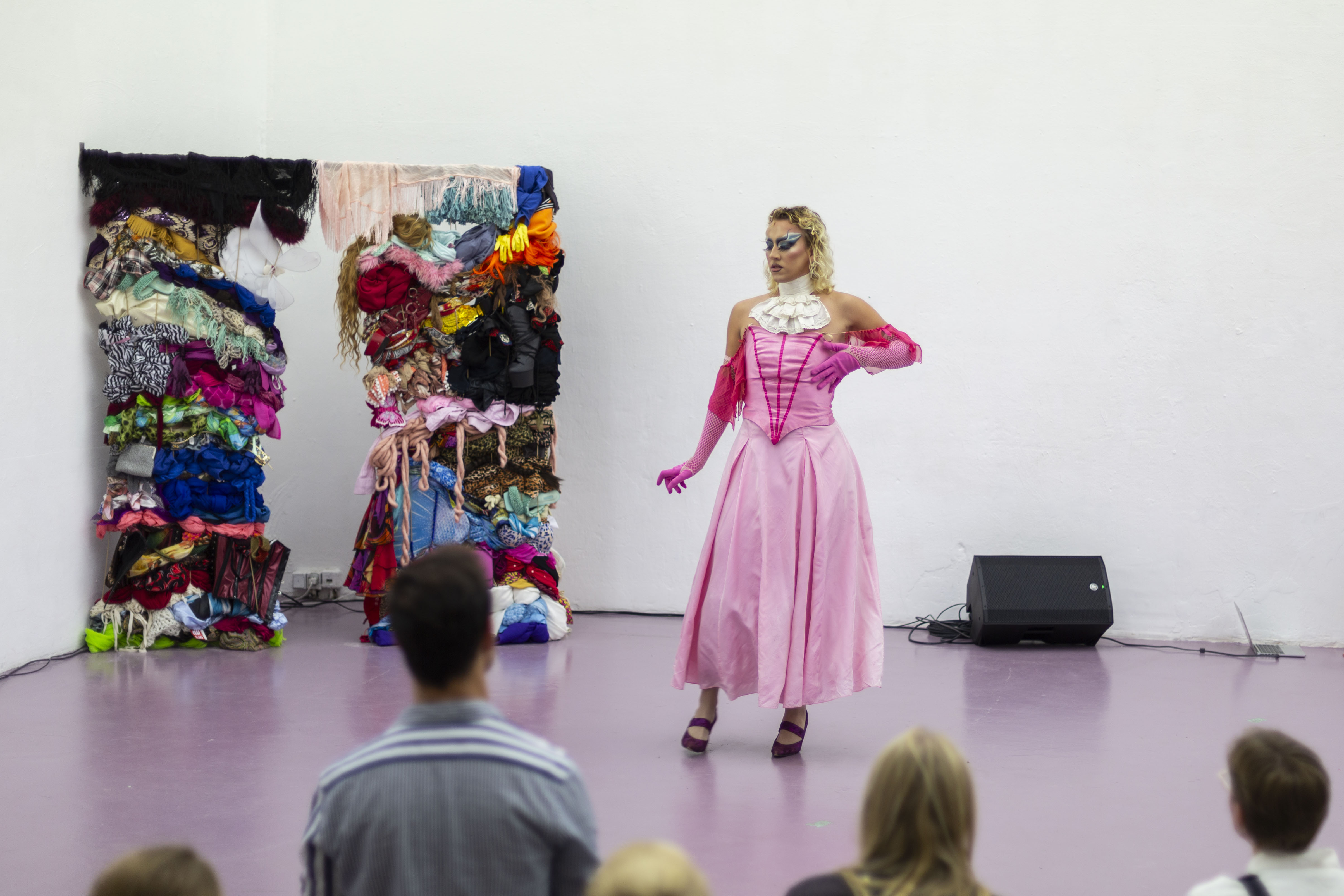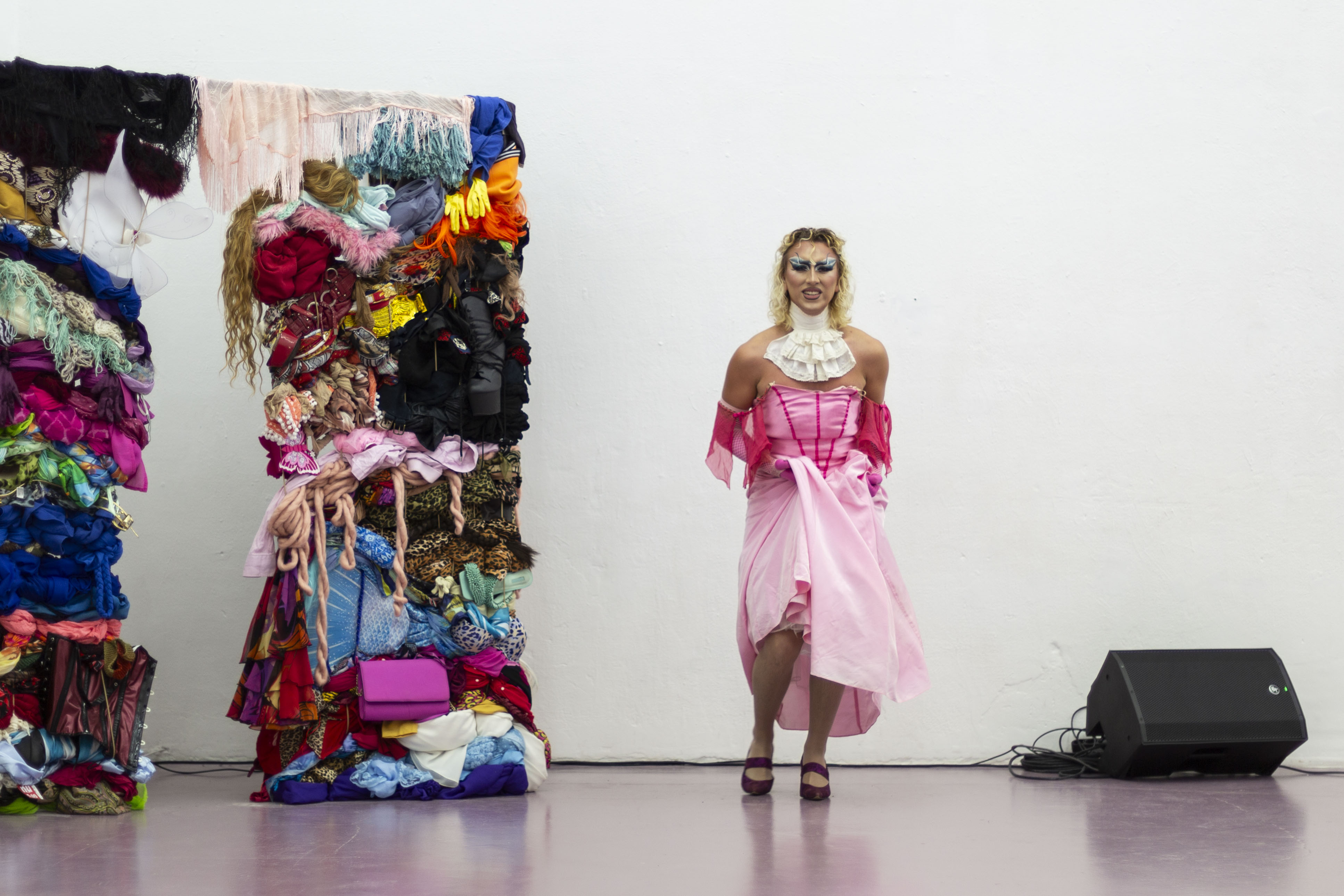
Performance at W139 in front of my work “A House of Hope”.
“A House of Hope” was previously shown as a part of the Uncut exhibition “Refuge - fleeing, flowing, leaking” at the Stedelijk Museum in Amsterdam.
Context:
Installation made of clothes, purses, wigs, shoes and objects borrowed from
members of The House Of Hopelezz. The wall creates a shelter-like refuge and tells stories of queer familyhood.
As the oldest drag house in the Netherlands, The House of Hopelezz is inhabited by a huge amount of drag queens, burlesque dancers, world wide sluts, drag kings and performance artists from all over the world. Traditionally, transgender queens and drag queens have taken homeless queer kids in — given them a home, making them part of their drag house. Today the concept of a drag house has become more of a saying than a reality. Queens from The House Of Hopelezz do not necessarily live together, but they come together to work and support each other.
(refuge in) A House of Hope is an installation in which the garments are woven together in a wall piece that relates to the safety network that a drag house can be. The work examines the fundamentals of creating a performative identity. By taking the outfits and objects out of the clubs, the work expands the notions of house, family, queerness and belonging.
